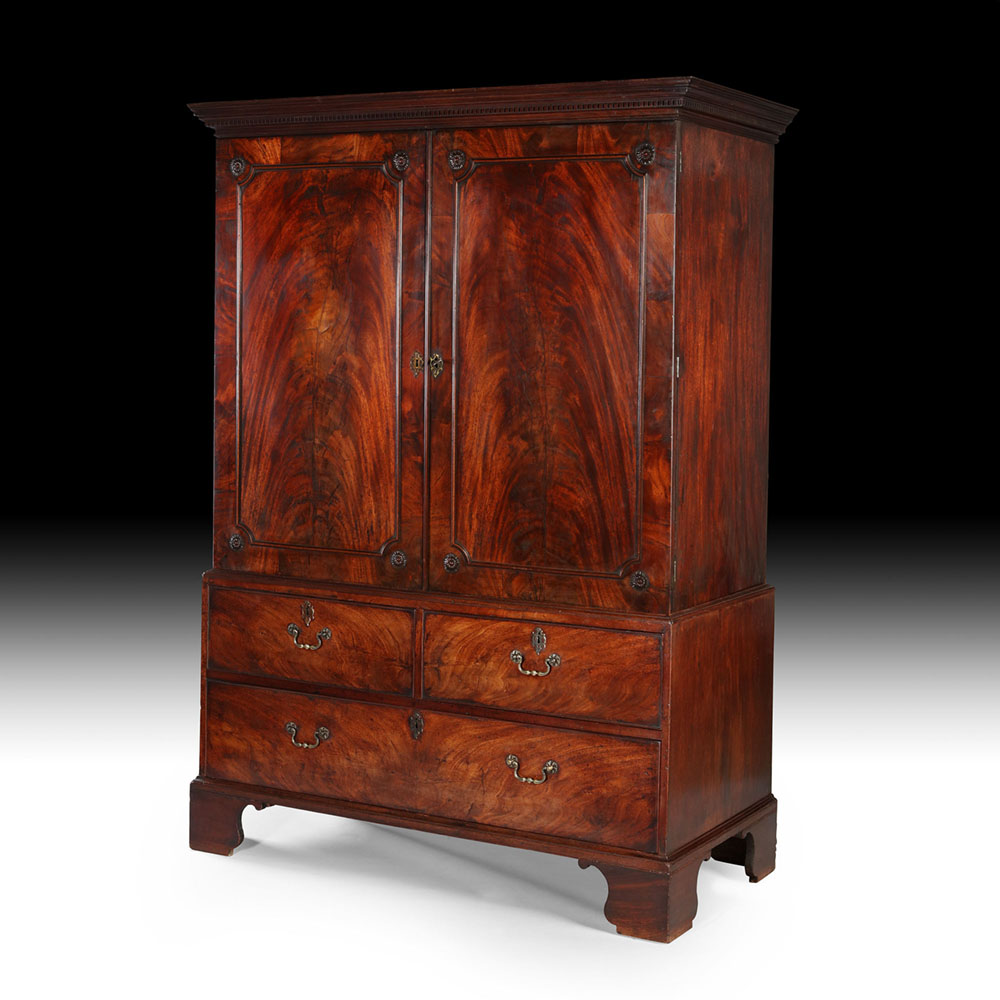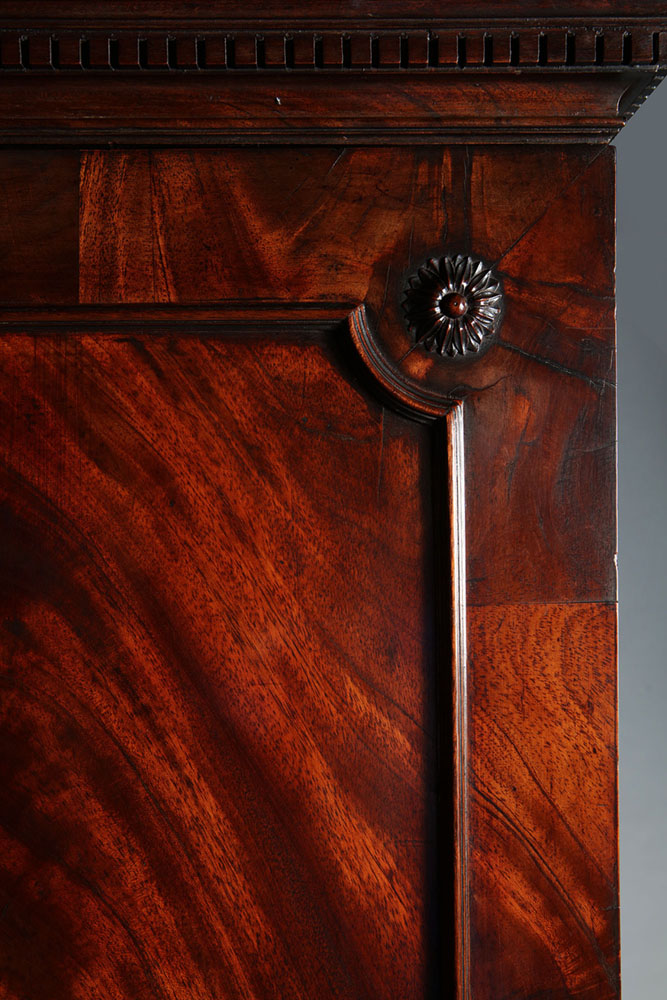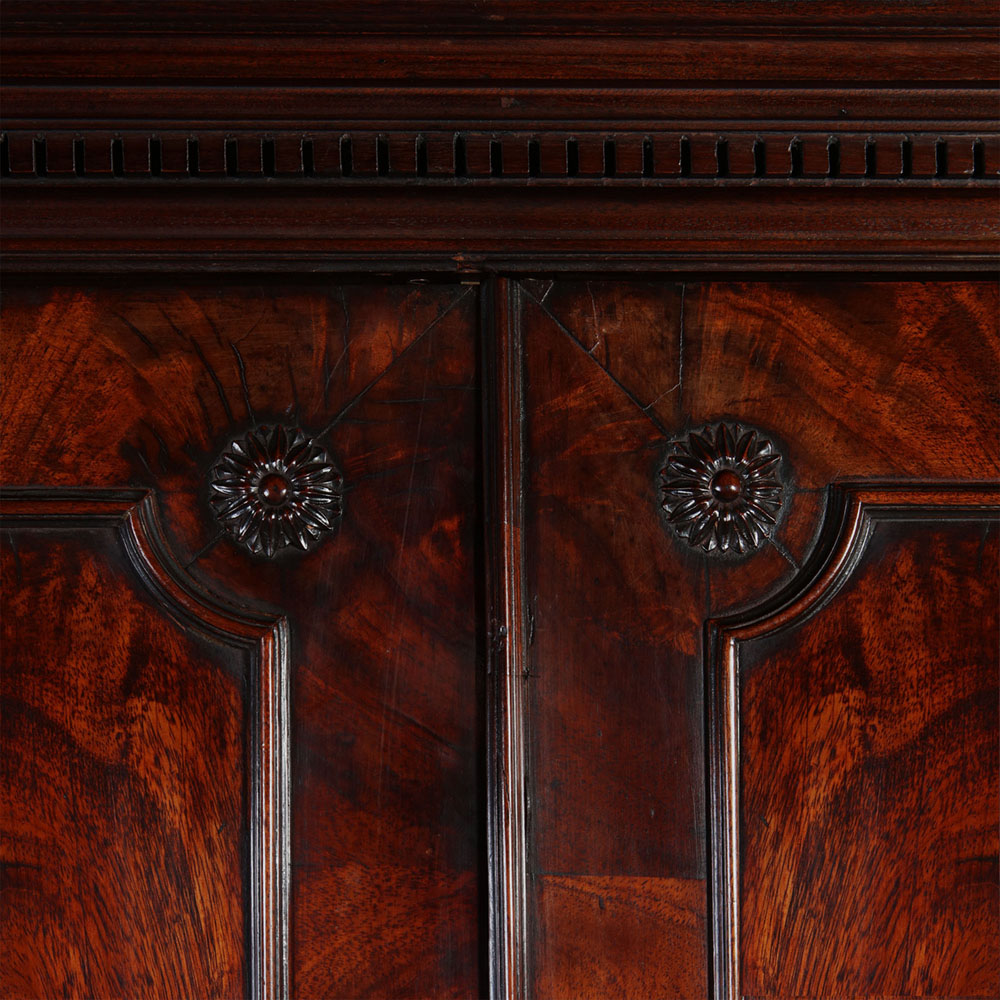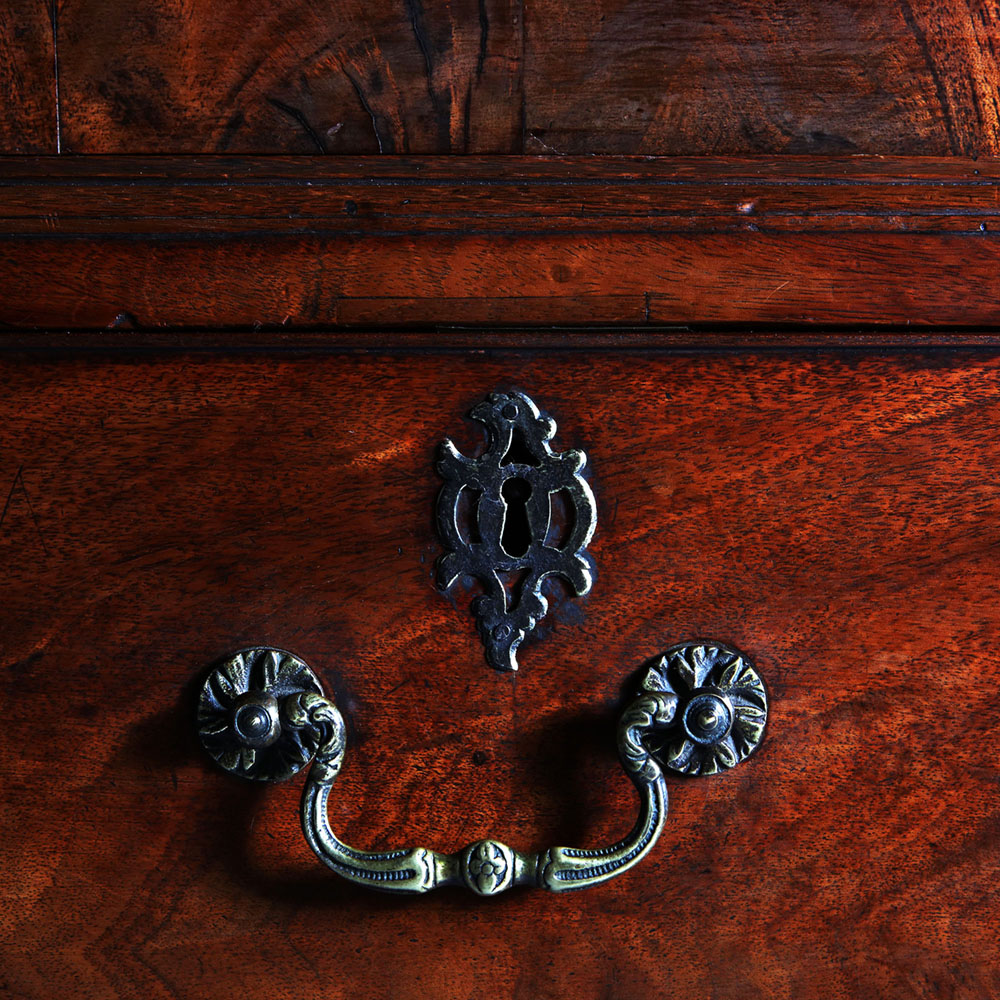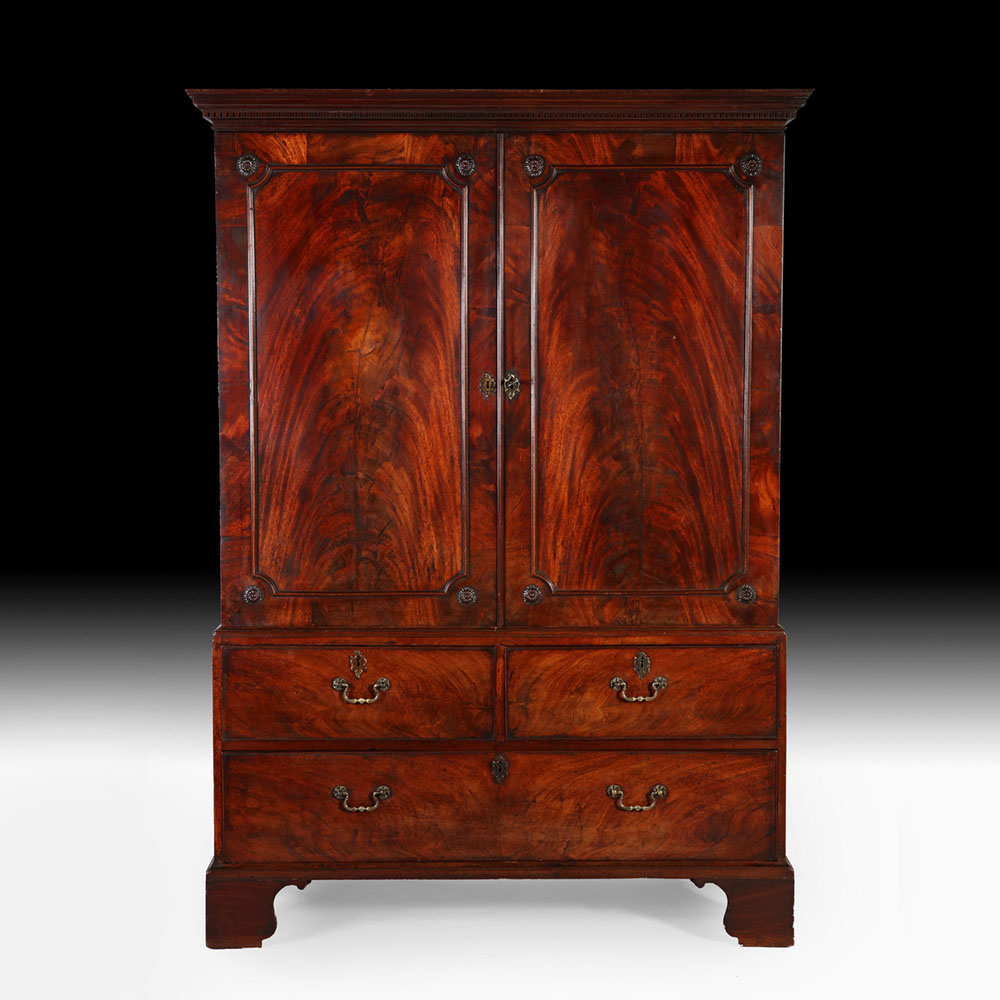George III Mahogany Linen Press Wardrobe
1760 England
Sold
Request Information
George III Mahogany Linen Press Wardrobe
A fine George III mahogany linen press in outstanding original condition. The press was obviously made to exceed with the cabinetmaker using only the very finest materials in an extravagant manner. An example of this extravagance can be seen on every angle
Traditionally, a ‘linen press’ (or just press) is a cabinet, usually of woods such as oak, walnut or mahogany and designed for storing sheets, clothing, and other textiles. Linen-presses were made chiefly in the 17th, 18th, and 19th centuries and are now considered decorative examples of antique furniture. Examples made during the 18th century often featured expensive veneers and intricate
Condition
Excellent, displaying a variety of shades to its original well-patinated surface. Bracket feet, handles, escutcheons, and slides original.
Dimensions
H 74.81 in. x W 50.4 in. x D 24.02 in.
H 190 cm x W 128 cm x D 61 cm
PREVIOUSLY SOLD FURNITURE
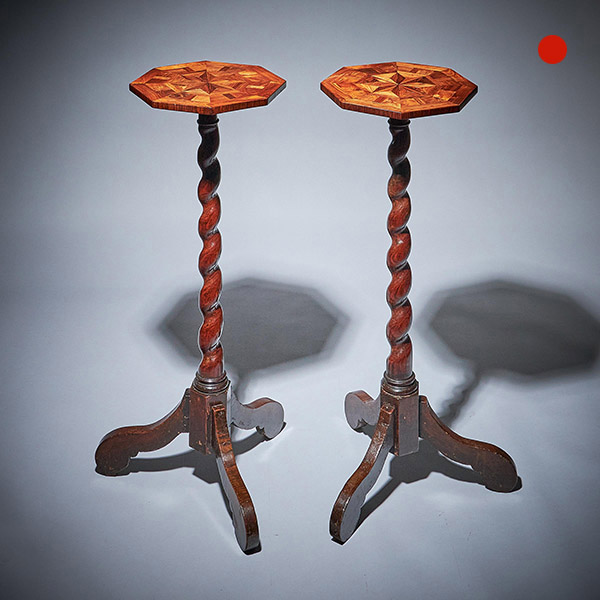
A Unique Pair of 17th Century Kingwood Charles II Parquetry Torchieres, Circa 1660.
A Unique Pair of 17th Century Kingwood Charles II Parquetry Torchieres, Circa 1660. Sold to the Fondation Custodia, Paris.Follow UsA Unique Pair of 17th Century Kingwood Charles II Parquetry Torchieres, Circa 1660. The kingwood parquetry tops...

Fine 18th Century George III Chippendale Mahogany pie-crust Tripod Table
Fine 18th Century George III Chippendale Mahogany pie-crust Tripod Table SoldFollow UsFine 18th Century George III Chippendale Mahogany pie-crust Tripod Table A Fine 18th Century George III Mahogany Pie-Crust Tripod Table with birdcage in the...
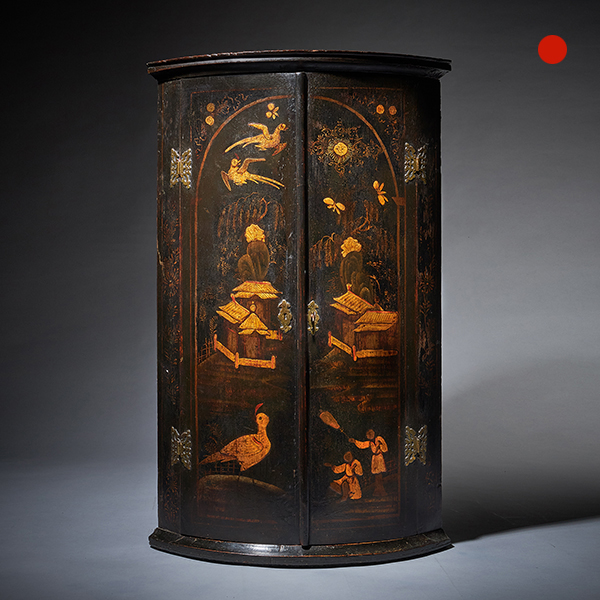
Early 18th Century Queen Anne/George I Japanned Chinoiserie Corner Cupboard
Early 18th Century Queen Anne/George I Japanned Chinoiserie Corner Cupboard SoldFollow UsEarly 18th Century Queen Anne/George I Japanned Chinoiserie Corner Cupboard A very atmospheric and original Queen Anne to George I black japanned...

Pair of George IV Regency Specimen Wood Parquetry Boxes of Sarcophagus Shape
Pair of George IV Regency Specimen Wood Parquetry Boxes of Sarcophagus Shape SoldFollow UsPair of George IV Regency Specimen Wood Parquetry Boxes of Sarcophagus Shape An extremely rare and fine pair of George IV Regency exotic timber boxes of...
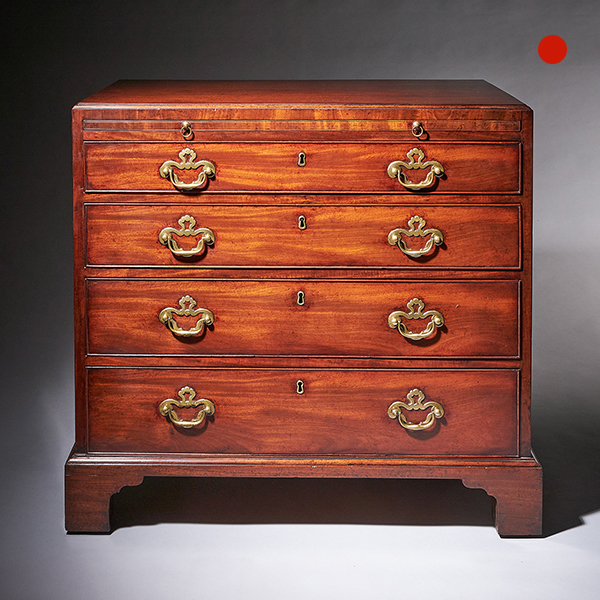
18th Century George II Mahogany Caddy-Topped Chest by Giles Grendey C.1730-1740
18th Century George II Mahogany Caddy-Topped Chest by Giles Grendey, C.1730-1740 Sold Follow Us18th Century George II Mahogany Caddy-Topped Chest by Giles Grendey, C.1730-1740 An important George II mahogany caddy-topped chest, circa...
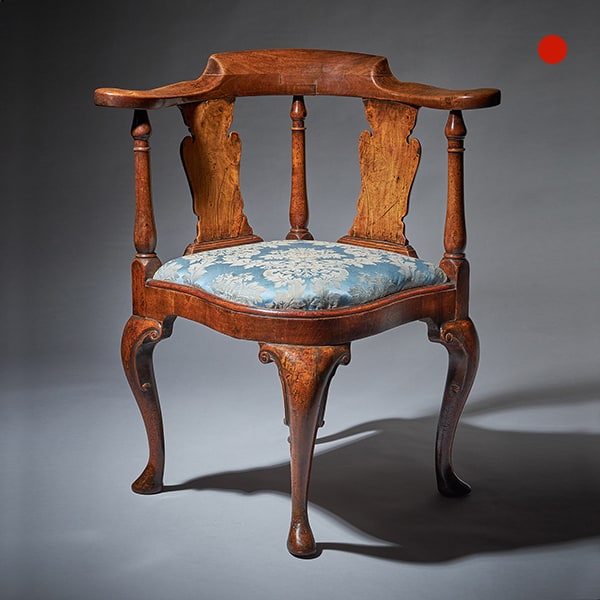
Queen Anne Period Walnut Corner Chair Circa 1702-1714
Queen Anne Period Walnut Corner Chair, Circa 1702-1714 Sold Follow UsQueen Anne Period Walnut Corner Chair, Circa 1702-1714 Queen Anne period walnut corner chair, 1702-1714. It is solid walnut, raised on four boldly carved cabriole legs with...

A Unique Pair of 17th Century Kingwood Charles II Parquetry Torchieres, Circa 1660.
A Unique Pair of 17th Century Kingwood Charles II Parquetry Torchieres, Circa 1660. Sold to the Fondation Custodia, Paris.Follow UsA Unique Pair of 17th Century Kingwood Charles II Parquetry Torchieres, Circa 1660. The kingwood parquetry tops...

Fine 18th Century George III Chippendale Mahogany pie-crust Tripod Table
Fine 18th Century George III Chippendale Mahogany pie-crust Tripod Table SoldFollow UsFine 18th Century George III Chippendale Mahogany pie-crust Tripod Table A Fine 18th Century George III Mahogany Pie-Crust Tripod Table with birdcage in the...

Early 18th Century Queen Anne/George I Japanned Chinoiserie Corner Cupboard
Early 18th Century Queen Anne/George I Japanned Chinoiserie Corner Cupboard SoldFollow UsEarly 18th Century Queen Anne/George I Japanned Chinoiserie Corner Cupboard A very atmospheric and original Queen Anne to George I black japanned...

Pair of George IV Regency Specimen Wood Parquetry Boxes of Sarcophagus Shape
Pair of George IV Regency Specimen Wood Parquetry Boxes of Sarcophagus Shape SoldFollow UsPair of George IV Regency Specimen Wood Parquetry Boxes of Sarcophagus Shape An extremely rare and fine pair of George IV Regency exotic timber boxes of...

18th Century George II Mahogany Caddy-Topped Chest by Giles Grendey C.1730-1740
18th Century George II Mahogany Caddy-Topped Chest by Giles Grendey, C.1730-1740 Sold Follow Us18th Century George II Mahogany Caddy-Topped Chest by Giles Grendey, C.1730-1740 An important George II mahogany caddy-topped chest, circa...

Queen Anne Period Walnut Corner Chair Circa 1702-1714
Queen Anne Period Walnut Corner Chair, Circa 1702-1714 Sold Follow UsQueen Anne Period Walnut Corner Chair, Circa 1702-1714 Queen Anne period walnut corner chair, 1702-1714. It is solid walnut, raised on four boldly carved cabriole legs with...
YOU MAY ALSO LIKE
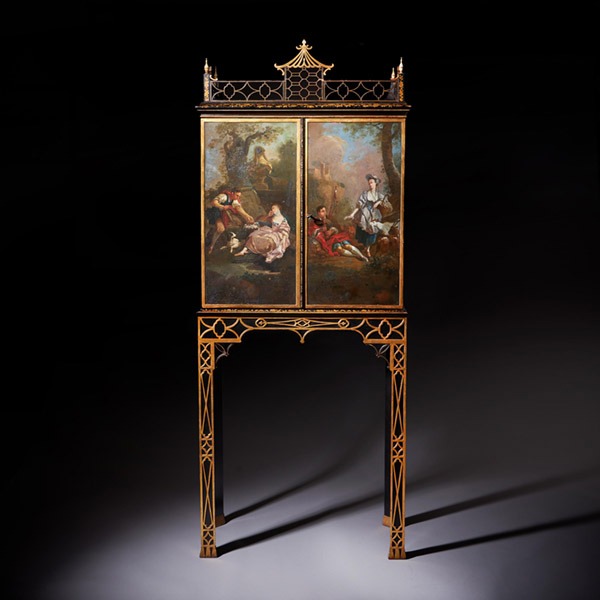
A Rare Chinese Chippendale George III cabinet on stand, circa 1760 England
A Rare Chinese Chippendale George III cabinet on stand, circa 1760. England £38,000Follow UsA Rare...
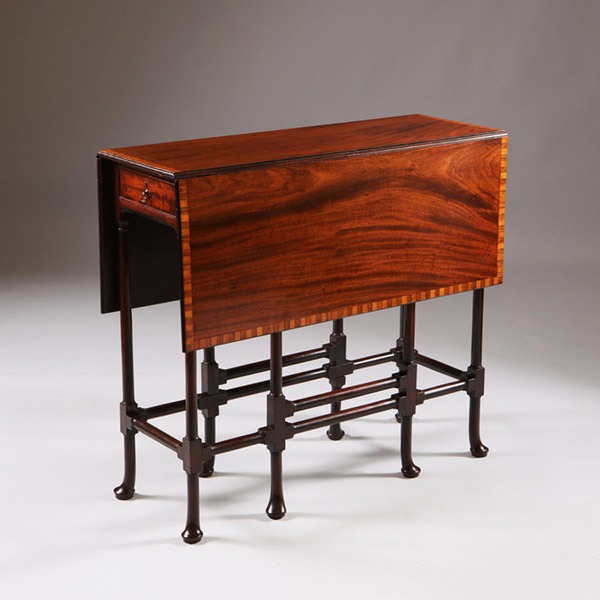
George III mahogany spider-leg table attributed to Thomas Chippendale 1768
A George III mahogany spider-leg table attributed to Thomas Chippendale 1768 £12,000Follow UsA...
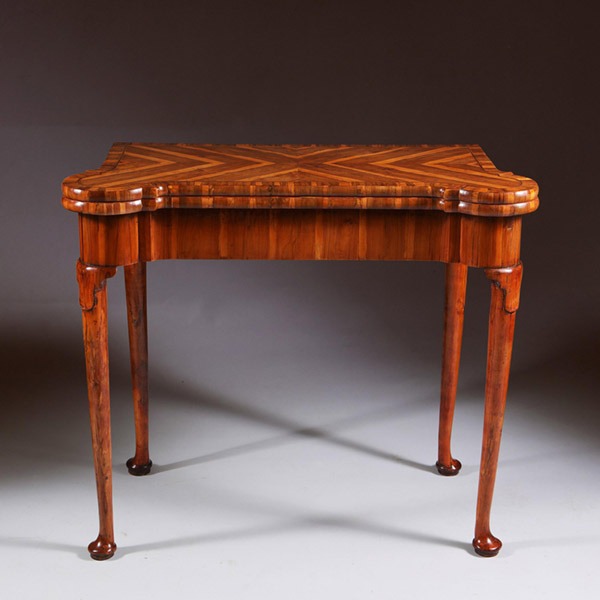
Museum Grade George I Cocus Wood Card Table, Circa 1725, England
Museum Grade George I Cocus Wood Card Table, Circa 1725. England £32,000Follow UsMuseum Grade...

A Rare and Important Charles II 17th Century Table Clock by Henry Jones
A Rare and Important Charles II 17th Century Table Clock by Henry Jones £85,000Follow UsA Rare and...
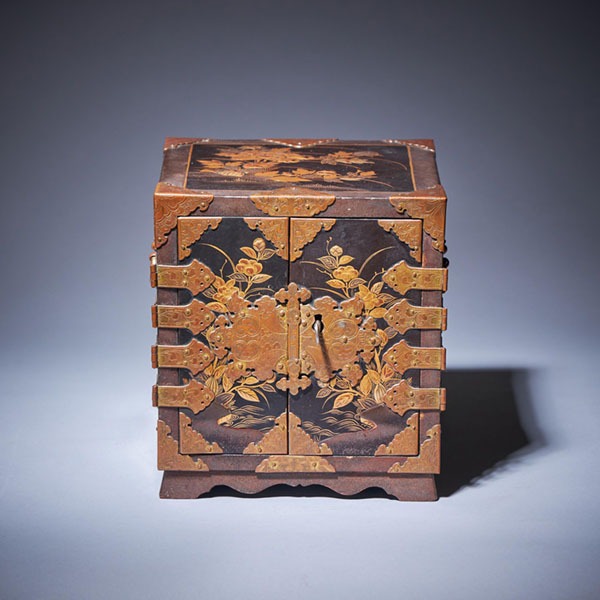
Important Early Edo Period 17th Century Miniature Japanese Lacquer Cabinet
Important Early Edo Period 17th Century Miniature Japanese Lacquer Cabinet £36,000Follow...

Fine Scottish Two-Day Marine Chronometer Signed and Numbered D. McGregor
Fine Scottish Two-Day Marine Chronometer Signed and Numbered D. McGregor £6,500Follow UsFine...

A Rare Chinese Chippendale George III cabinet on stand, circa 1760 England
A Rare Chinese Chippendale George III cabinet on stand, circa 1760. England £38,000Follow UsA Rare...

George III mahogany spider-leg table attributed to Thomas Chippendale 1768
A George III mahogany spider-leg table attributed to Thomas Chippendale 1768 £12,000Follow UsA...

Museum Grade George I Cocus Wood Card Table, Circa 1725, England
Museum Grade George I Cocus Wood Card Table, Circa 1725. England £32,000Follow UsMuseum Grade...

A Rare and Important Charles II 17th Century Table Clock by Henry Jones
A Rare and Important Charles II 17th Century Table Clock by Henry Jones £85,000Follow UsA Rare and...

Important Early Edo Period 17th Century Miniature Japanese Lacquer Cabinet
Important Early Edo Period 17th Century Miniature Japanese Lacquer Cabinet £36,000Follow...

Fine Scottish Two-Day Marine Chronometer Signed and Numbered D. McGregor
Fine Scottish Two-Day Marine Chronometer Signed and Numbered D. McGregor £6,500Follow UsFine...



